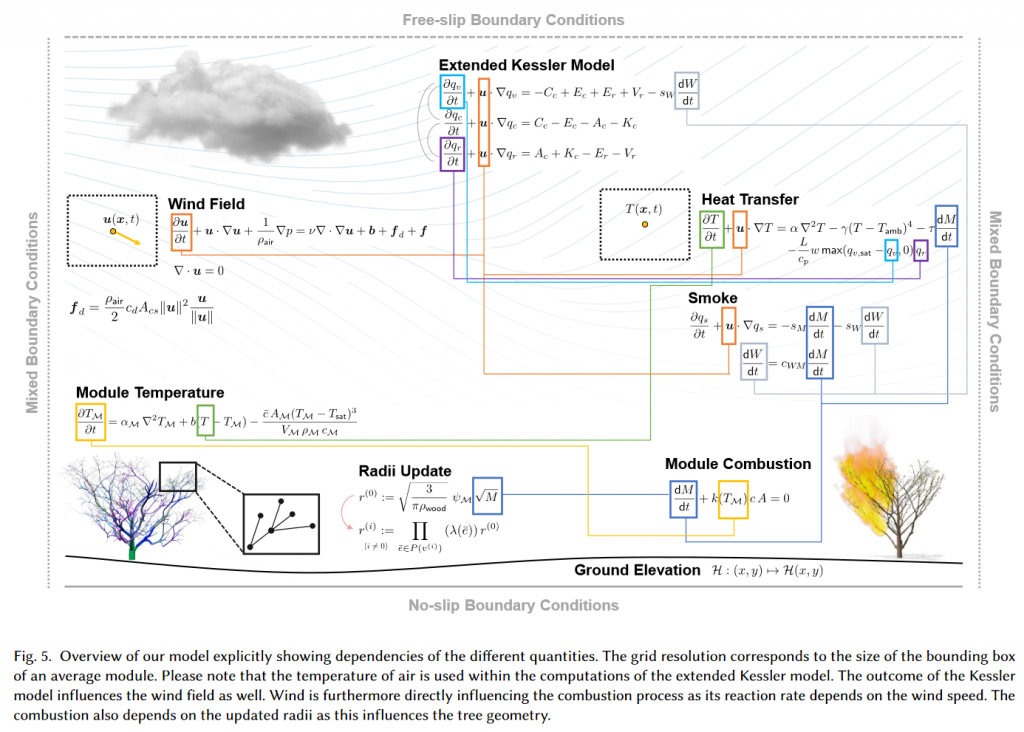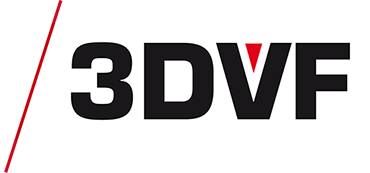This article is also available in:
Français
Foreword : if this is your first time on 3DVF, welcome ! We are a website focused on digital arts such as VFX, animation, videogames and VR. We have been following the industry for around 20 years in French, and we are now also available in English (the English website is still a work in progress, and will improve rapidly). If you like this article, don’t hesitate to bookmark us or to follow us on Twitter !
We begin our dive in the SIGGRAPH 2021 papers with an impressive research project: Fire in Paradise: Mesoscale Simulation of Wildfires by T. Hädrich, D. T. Banuti, W. Pałubicki, S. Pirk, and D. L. Michels.. This team worked on the realistic simulation of wildwfire at the scale of a whole forest, and at interactive rates.
Please note that the goal was the simulation of fires, not the realistic rendering of flames, which is another topic altogether.
Here is the video of the research project, followed by some explanation about this paper.
Concrètement, les chercheurs proposent une formulation mathématique du processus de combustion qui prend en compte les plantes de façon détaillée, les transferts de chaleur, le fait que la carbonisation crée une couche isolante, la perte de masse, le vent, etc.

The resulting simulations are quite impressive: ground elevation, tree density or rain have visible and realistic effects. Even better, thanks to this model, you can simulate the influence of various measures against wildfires, such as cutting down trees as firebreaks, or the use of fire retardant.

The authors explain that they have implemented their method within a C++/CUDA Framework; the rendering is handled using a volume ray casting algorithm. This implementation is fast enough for interactive simulation using a workstation and a GeForce RTX graphic card, even when working with big scenes such as a simulation of a forest fire in California’s Yosemite National Park (the scene contains about 68000 trees). The method can still be used well over 100k trees, if interactivity is not required.

This kind of model has many applications, such as fire prevention and response, but also in the media & entertainment area (for example to recreate a realisic fire for a documentary).

It should be noted, however, that this method is not perfect. The authors highlight several limitations: for example, fire can spread on the ground when grass or branch litter catch fire, but they chose not to include this effect, since it would “significantly increase the simulation time”. The effect of the wind on the trees themselves is not taken into account (they are not swaying in the wind), neither is the effect of tree resin or flying sparks. Last, but not least, forest fires can create thunderstorms and therefore lightning: this could also be included in a more accurate model. In other words, even if this novel method is already quite impressive, there is room for improvement in the years to come. Hopefully, we will be able, one day, to simulate forest fires at an interactive rate with all those factors taken into account.
For More Information
Fire in Paradise: Mesoscale Simulation of Wildfires, par T. Hädrich, D. T. Banuti, W. Pałubicki, S. Pirk, et D. L. Michels..
SIGGRAPH 2021 will take place virtually 9-13 August. Don’t forget to check out the program & register!


